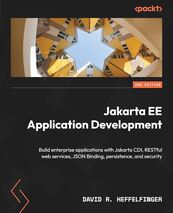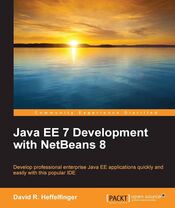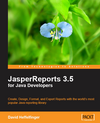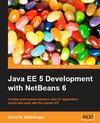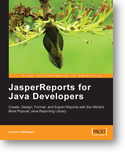Navigation
Enhance Your Echo2 Application with EchoPointNG Components
EchoPointNG Components
EchoPointNG contains a large number of additional components for use with Echo2 applications. In this article we will discuse the DateChooser, the DateField, the TabbedPane, and the menu component.
DateChooser Component
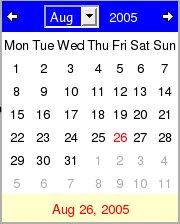
The DateChooser component displays a calendar on the browser,
allowing the user to pick a date by selecting values from it.
Using a DateChooser in your code is very simple. Here is some
sample code fragment that will display a DateChooser on the browser:
public class DateChooserDemo extends ContentPane
{
public DateChooserDemo()
{
DateChooser dateChooser = new DateChooser();
add(dateChooser);
}
}DateChooser has many methods to modify its font, colors and
many other properties that affect how it looks. Refer to the EchoPointNG
documentation for more information.
DateField Component

The DateField component displays a text field with
an icon to display a calendar component for the user to pick a date. It
is similar to the numerous JavaScript based calendar components found in
many web sites.
The code to add a DateField to an Echo2 application is similar to
the code to add a DateChooser. The DateField
class contains many methods to control the date format and its
appearance. Consult the EchoPointNG documentation for details.
TabbedPane Component
The TabbedPane component is a welcome addition to the standard
Echo2 components. It creates a set of tabs containing panes where other
containers can be added. It is backed by a TabModel interface, which is
where the number of tabs and the content of each tab is set.  EchoPointNG includes a
EchoPointNG includes a DefaultTabModel class that
implements the TabModel interface, it is the simplest way
to populate an instance of TabbedPane. The following code fragment
demonstrates how to create and populate a TabbedPane:
public class TabbedPaneDemo extends ContentPane
{
public TabbedPaneDemo()
{
TabbedPane tabbedPane = new TabbedPane();
DefaultTabModel defaultTabModel = new DefaultTabModel();
defaultTabModel.addTab("Tab 1", new Label("This is the first tab."));
defaultTabModel.addTab("Tab 2", new Label("This is the second tab."));
tabbedPane.setModel(defaultTabModel);
add(tabbedPane);
}
}

